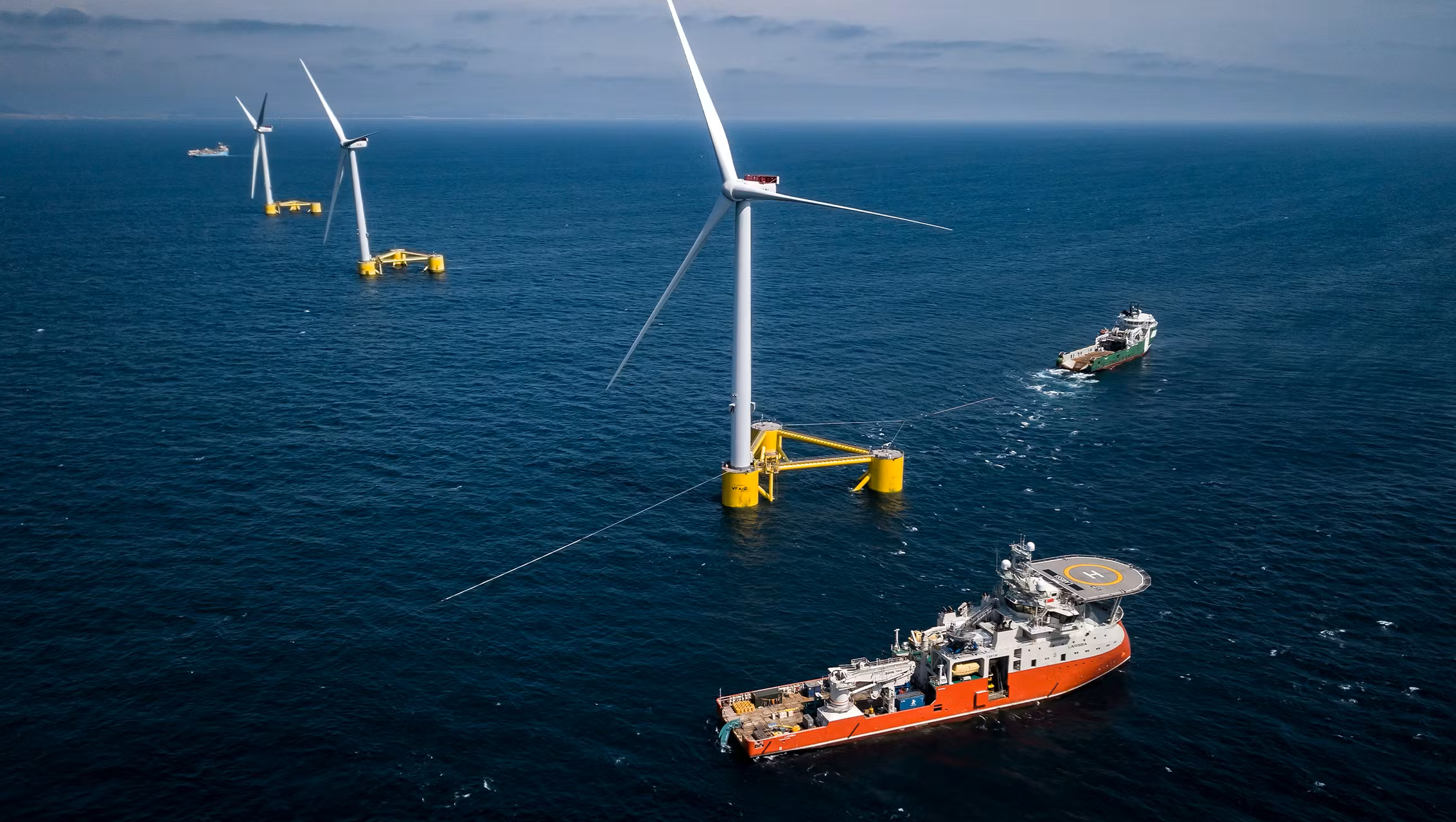Offshore Wind Türkiye: Charting New Paths for Clean Energy at Sea
In May 2025, the coastal city of Çanakkale became the focal point of Türkiye’s growing ambitions in clean energy. The Offshore Wind Türkiye 2025 Conference brought together key players across the energy spectrum—engineers, policymakers, researchers, maritime specialists, and technology providers to explore the emerging role of offshore wind in the country’s long-term energy transition.
While Türkiye has already made significant strides in onshore wind and solar development, this event signaled a clear pivot toward the untapped potential of its surrounding seas. And as the conference discussions revealed, this isn't just about generating more power—it's about building smarter, more flexible, and future-ready energy systems.
WindFloat Atlantic (Viana do Castelo, Portugal)
Anchoring Ambitions in Maritime Strength
Türkiye's geography presents a significant advantage. With coastlines along the Aegean, Marmara, and Black Seas, the country boasts an estimated 75 GW of technical offshore wind potential, a vast resource that is only beginning to be explored. The government's 2035 target of 5 GW in offshore wind capacity reflects a growing recognition of the need to diversify energy sources while ensuring long-term sustainability and independence.
At the heart of the conference was the release of the Marine Spatial Planning Map of the Republic of Türkiye. This initiative led by DEHUKAM (National Center for the Sea and Maritime Law) represents a crucial step toward identifying suitable zones for offshore development, while carefully balancing ecological protection, marine traffic, fisheries, and other sea-based activities. By introducing a structured approach to how Türkiye's marine areas can be used, this map sets the tone for responsible and integrated offshore energy planning.
Feasibility studies are currently underway in multiple locations, including Bandırma, Gelibolu, Karabiga, and Bozcaada, areas with strong wind resources and proximity to infrastructure. While Türkiye has no operational offshore wind farms yet, the groundwork is visibly being laid.
Engineering the Future: Floating Wind and Infrastructure Readiness
Among the most anticipated topics at the conference was floating wind technology. With much of Türkiye’s offshore wind potential lying in deeper waters, floating platforms are expected to play a significant role in project deployment. These technologies allow wind turbines to be installed far from shore, where wind speeds are stronger and environmental impact on coastal areas is reduced.
Sessions moderated by industry leaders and academic experts covered key aspects of engineering and design, including platform stability, marine construction, and transmission infrastructure. Discussions also highlighted the importance of local shipyards such as CEMRE and Çeksan in adapting their production capacity to support offshore energy infrastructure, including floating platforms and specialized service vessels.
These developments suggest the formation of a new industrial ecosystem, one that blends maritime know-how with renewable energy innovation.
A Subtle Yet Growing Interest in Hybrid Energy Solutions
While the spotlight remained on offshore wind, the conference quietly introduced another layer of innovation: the potential for hybrid renewable energy systems.
Hybrid systems, where multiple renewable technologies are co-located or integrated offer the promise of more reliable and efficient energy generation. In the offshore context, this could mean combining wind turbines with floating solar photovoltaics (PV), integrating battery storage systems on platforms, or even producing green hydrogen from excess offshore wind power via electrolysis.
Several sessions touched on this idea indirectly:
Floating wind panels were discussed not only in terms of turbine design but also for their potential to accommodate other technologies.
Academic speakers from institutions such as İzmir Institute of Technology (İYTE) and Middle East Technical University (ODTÜ) presented research pointing toward synergies between wind and solar resources, and the added value of energy storage in balancing intermittency.
Topics around marine spatial planning and environmental integration hinted at future multi-use zones, where energy generation, aquaculture, and conservation efforts could coexist.
While Türkiye’s regulatory framework is still catching up to support complex hybrid projects offshore, the interest shown at the conference suggests that these systems may move from theory to pilot implementation in the near future.
Momentum Without Overstatement
One of the most striking takeaways from Offshore Wind Türkiye 2025 was the sense of measured optimism. Participants acknowledged the significant challenges ahead ranging from financing and permitting to logistics and interconnection but the general tone was not speculative. It was constructive and grounded.
Stakeholders emphasized collaboration, early coordination, and long-term planning. The presence of international turbine manufacturers, marine engineers, legal experts, and environmental scientists underscored the multifaceted nature of offshore energy development. This is not just about erecting turbines it’s about building a sustainable, adaptable, and interconnected energy future.
Looking Ahead: An Energy Landscape in Transition
Türkiye is now poised to become a significant player in the offshore renewable energy space not only because of its natural resources but because of its willingness to build cross-sector alignment, invest in strategic planning, and embrace emerging technologies like hybrid energy systems.
As the market evolves, so too will the nature of what’s possible at sea. The lines between wind, solar, storage, and green hydrogen are beginning to blur, opening up opportunities to rethink how marine space and infrastructure are used. Türkiye’s approach starting with foundational planning and steadily advancing through collaboration could serve as a model for other coastal nations navigating similar transitions.
The Horizon Is Expanding
The Offshore Wind Türkiye 2025 Conference was more than a moment of reflection; it was a clear signal of movement. While the industry is still in its formative phase, the pace of development is accelerating. With supportive policy, growing expertise, and a future-minded approach, Türkiye’s offshore wind sector is shaping up to be a key pillar of its broader energy transformation.
And as hybrid systems gain quiet but consistent attention, the stage is being set for clean energy solutions that are more than just powerful—they’re intelligent, integrated, and resilient
Get our full Türkiye Energy Report for a deeper dive into policies, projections, and investment trends



